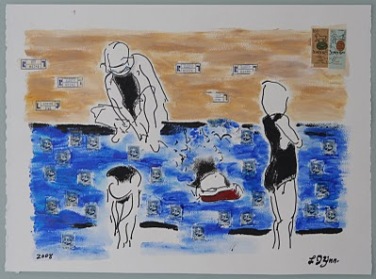1. Responsible Religion
 We can ignore it. We can try going around it, under it, over it.
We can ignore it. We can try going around it, under it, over it.
But religion can lead to Spiritual Sustenance if we go through it.
This means thinking for ourselves, understanding how religion affects us and others— now and later, understanding others’ religions, and creating a relationship to religion that allows us to grow -responsibly.
ZinnHouse is here to help.
2. Floating
and Swimming
 Rabbi David Wolpe wrote that floating takes faith. Floating is especially enjoyable after learning to swim, to propel through water. And faith is especially appreciated after understanding religion.
Rabbi David Wolpe wrote that floating takes faith. Floating is especially enjoyable after learning to swim, to propel through water. And faith is especially appreciated after understanding religion.
How do different religious traditions, customs, norms affect our spirit? It is one thing to float through religion, it is another to understand and move it in ways that strengthen us spiritually. I encourage you to look at this website and, in addition to floating, learn to swim.
October 9, 2010
Continue reading Five Quick Reflections on Responsible Religion

 Given my perhaps naive belief that interfaith orientations and integral philosophies are part of humanity’s next evolutionary step in spiritual development, I wondered what kind of music would show up in our culture to reflect this transition in consciousness? Then I turned on the radio and, Voila!
Given my perhaps naive belief that interfaith orientations and integral philosophies are part of humanity’s next evolutionary step in spiritual development, I wondered what kind of music would show up in our culture to reflect this transition in consciousness? Then I turned on the radio and, Voila!  I had a chance to see
I had a chance to see  Don’t worry: I don’t give away the story. I understand that the book on which
Don’t worry: I don’t give away the story. I understand that the book on which  The New York Times today (1 Oct 2013) posted
The New York Times today (1 Oct 2013) posted